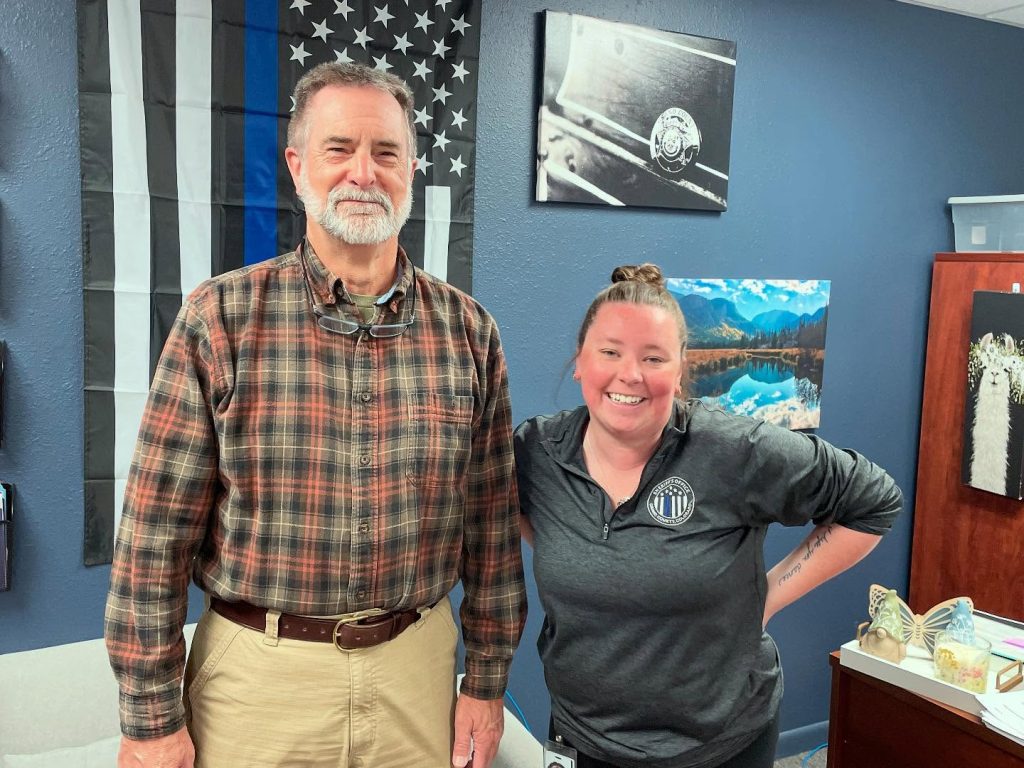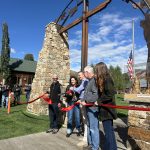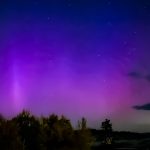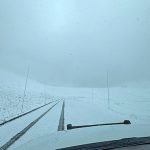Colorado reorganizes its wildfire dispatch centers, solving a longstanding Grand County split
Grand County Sheriff's fire manager helped guide the reorganization for northern third of state

Austin Colbert/The Aspen Times
Grand County is a vast, rural county in north-central Colorado. At 1,870 square miles, it’s more than 50% larger than Rhode Island, and just slightly smaller than Delaware.
When is comes to wildfire response, Grand County used to be split between two dispatch centers — Craig and Fort Collins — which coordinated firefighting resources throughout the northern part of the state.
At times, having two centers led to discrepancies in fire danger ratings and response plans, but as of April 2025, Grand is now united under one — the Northern Colorado Interagency Dispatch Center.
According to Paul Mintier, fire management officer for the Grand County Sheriff’s Office, the consolidation process started about four years ago to improve efficiency and messaging.
“The consolidation brought a lot of some simplicity by having one dispatch center to call instead of the two like we had before,” Mintier said. “The response plans and everything were consolidated so everybody across the board understands it.”
Mintier played a key role in this consolidation process, as the representative for Grand County. A member of the board, he collaborated with other members to provide input on the process.
“In mid-April, they threw the switch, as we like to say, and Northern Colorado Interagency Dispatch Center came to life,” he said. “Craig and Fort Collins just went away; they were dissolved.”
The home base for the new dispatch center is in Johnstown which is between Boulder and Fort Collins on the Front Range. The boundaries of Northern Colorado Interagency Dispatch Center stretch from Utah to Kansas with a southern border of I-70; the northeastern plains, Denver and the northern Rockies are included in its domain.
The rest of Colorado’s five dispatch centers are now organized as follows:
- Grand Junction Interagency Dispatch Center covers the 1-70 corridor from the Continental Divide to Grand Junction and the Utah border
- Montrose Interagency Dispatch Center covers southwest/central Colorado including the communities of Gunnison, Montrose, Delta, Telluride, Ouray, Lake City and Norwood
- Durango Interagency Dispatch Center covers the southwest corner including Cortez, Durango and Pagosa Spring
- Pueblo Interagency Dispatch Center covers a vast, southeastern section of the state from Creede to the San Luis Valley, Buena Vista, Leadville, Salida, Pueblo, Colorado Spring, Trinidad and the southeastern plains.

How was the new dispatch center created?
A board of experts guided the consolidation process. The top 10 agencies who’d used the Craig and Fort Collins dispatch centers the most were represented on the board, which included Grand County.
Each agency selected a representative. In addition to Grand, members represented Larimer County, Boulder County, the Arapaho Roosevelt National Forest, Medicine Bow-Routt National Forest, Department of Fire Prevention and Control (Northwest and Northeast sides), Moffatt County, National Park Service and the Northwest office of the Bureau of Land Management.
The fire chiefs in Grand County selected Mintier as their representative, due to his vast wildland fire experience.
Mintier got started on this path nearly 50 years ago, as a career firefighter with the U.S. Forest Service. In 2002, he moved to Grand County. After retiring from the forest service, he worked for the Grand Lake Fire Protection District and Grand Fire Protection District in Granby.
In 2018, he then became an essential part of the sheriff’s office, working with Sheriff Brett Schroetlin.
“My job was as an advisor to him, as a liaison between him and all the agencies,” he explained of his role as fire management officer.
Once a member of the board, Mintier used his expertise to come up with the plan for the dispatch center. In addition to representing Grand, he also represented Jackson County.
“It’s been a very interesting and long three and a half years of consolidating plans, making decisions about operational guidance, dispatch policies and procedures, staffing levels, everything you could think that’d go into an interagency dispatch center,” he said of his time as a board members.
All the details needed to be figured out, from having radio communication that would stretch from the border of Utah to Kansas, to buying new furniture for the new center. Mintier added that subject matter experts helped the board when in-depth analysis was required.
Now that the center is online, the board members will continue to operate in an advisory role as the Northern Colorado Board of Directors.
The Northern Colorado Interagency Dispatch Center is one of eight interagency dispatch centers in the Rocky Mountain Area. The dispatch center manages wildland fires and the mobilization of wildland firefighting resources in Northern Colorado, encompassing 21 counties, including Grand County.
The agencies involved include: the Bureau of Land Management, Fish and Wildlife Service, National Park Service, United States Forest Service, Colorado Division of Fire Prevention and Control, and numerous county governments and fire protection districts.
Each agency is involved in local, regional and national interagency wildland fire management through the dispatch center. The Northern Colorado Board of Directors represents the agencies and advises the dispatch center.
Consolidation will improve Fire Danger Rating system for Grand County
Within the entire dispatch center zone, there are 10 Fire Danger Rating Areas.
Most people associate Fire Danger Ratings with Smoky the Bear declaring what the danger is by color codes — low (green), moderate (blue), high (yellow), very high (orange) and extreme (red). While these terms seem simple, a lot of data goes into choosing these ratings.
Now with the Northern Colorado Interagency Dispatch Center fully operational, experts can streamline these danger ratings in Grand County, Mintier explained.
Prior to this, the Fort Collins center would have different ratings than the Craig center, and it was difficult to navigate between these. Sometimes the Craig center would state fire danger was high, while Fort Collins would state it was moderate. Since Grand County was caught in the middle, what should the official rating be?
As a fire management advisor to the Grand County Sheriff’s Office, Minitier had to walk that tightrope.
“I tried to look at all this information and balance it,” he described. “It’s been really tricky to try to find the middle ground so that everyone understands and is pleased with it.”
Now that there’s a new dispatch center, the next step is to create a unified Fire Danger Rating Area within the center’s zone. This next step is coined as the Fire Danger Operation Plan.
Fire Danger Operation Plan comes after consolidation
Currently, Grand is represented by two areas within the dispatch center zone — FRDA3 and the West Divide. Ironically, the West Divide area is actually on the east side of the county, with FRDA3 is on the west side.
Each side creates a fire prevention plan and a fire restriction plan, with slightly different matrixes. To institute restrictions, such as Stage 1 or Stage 2, Mintier and other experts use a scientific fire restriction matrix.
Generally speaking, west Grand County is hotter and drier than the east, since they have different vegetations, elevations and sometimes even weather. The operation plan seeks to address challenges within the dispatch center zone, such as Grand having these two separate environments.
Sometimes, the possibility of a destructive wildfire is higher in Kremmling, but lower along the Continental Divide. However, fire danger ratings make the most sense if they’re cohesive for an entire county.
Mintier explained that a group of fire danger experts are working hard to have this new cohesive plan for the entire dispatch center zone in place by spring 2026.
“This new plan will really analyze (fire danger indices) and get us in a really much better place to understand Grand County,” he said. “It’s a complicated county to analyze, but this new process is going to come out … and that’s going to make it easier for everybody, looking at what’s the fire danger, should we go into restrictions.”
Mintier to retire this year
After 47 years working in the fire service, Mintier is set to retire at the end of 2025.
According to sheriff Brett Schroetlin, Mintier goes out into the field after every fire to analyze its cause and origin. He was boots on the ground during the East Troublesome Fire, and the county relies on him daily for fire data.
“We’re very, very fortunate to have him. He’s going to leave a huge void for our agency and our county,” said Schroetlin. “He lives and breathes this stuff, and he truly is our expert in the field.”
Mintier expressed that “it’s been an honor” to work as the fire management officer for the Grand County Sheriff’s Office.
“I really have enjoyed working for the sheriff’s department, representing the sheriff and the county and all these different things,” he said. “It’s really been very satisfying to me. I’m always learning.”

Community members can learn about fire prevention tips by visiting the Grand County Wildfire Council’s website, BeWildFireReady.org or the National Interagency Fire Center’s website at NIFC.gov.

Support Local Journalism

Support Local Journalism
The Sky-Hi News strives to deliver powerful stories that spark emotion and focus on the place we live.
Over the past year, contributions from readers like you helped to fund some of our most important reporting, including coverage of the East Troublesome Fire.
If you value local journalism, consider making a contribution to our newsroom in support of the work we do.










